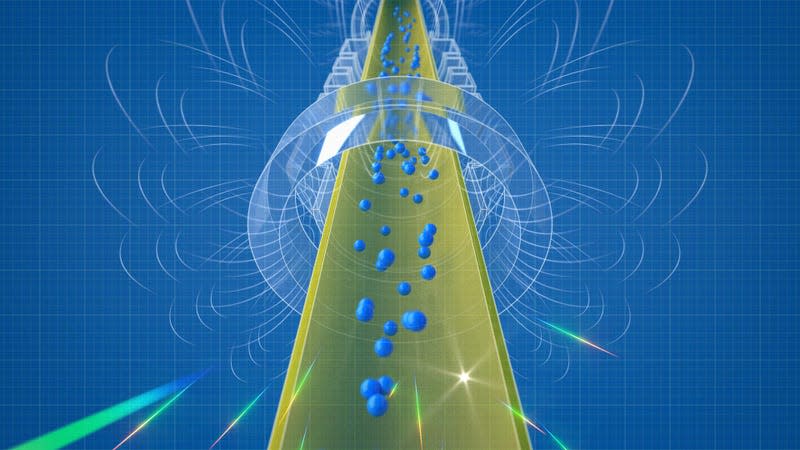Antimatter Reacts to Gravity in the Same Way as Ordinary Matter, Physicists Find

In the 95 years we’ve known about antimatter, physicists have not tested how the elusive inverse of ordinary matter is affected by gravity, the force that pulls masses to Earth and seems to affect all things in the classical realm.
Now, a group of physicists have. Members of the Antihydrogen Laser Physics Apparatus (ALPHA) collaboration at CERN directly observed antihydrogen—hydrogen’s antimatter foil—free-falling in a container. The observations confirm the weak equivalence principle set forth by Einstein in his general theory of relativity, which holds that all masses react the same way to gravity, regardless of their composition. The team’s research was published today in Nature.
Read more
Dan Harmon publicly addresses his falling out with Justin Roiland for the first time
America Needs A New Canal To Connect The Atlantic And Pacific
R.I.P. David McCallum, NCIS and The Man From U.N.C.L.E. actor
“In modern physics, inertial mass is encoded in the standard model of particle physics, whereas gravitational mass is dealt with in Einstein’s general theory of relativity,” wrote Anna Soter, a physicist at ETH Zürich, in an accompanying News & Views article. “The assumed equivalence of inertial mass and gravitational mass is incorporated in the weak equivalence principle, which is the cornerstone of general relativity—but no proposal has yet succeeded in unifying the theories.”
Plans to test gravity’s force on antimatter were first made by 2018, as Gizmodo reported at the time, when the ALPHA collaboration built ALPHA-g, a magnetic trap for antihydrogen atoms. The antimatter particles are suspended and then dropped inside the trap, in a 21st-century equivalent to the story of Galileo Galilei dropping objects off the Leaning Tower of Pisa.
The antimatter particles are cooled in order to slow their movement, giving the physicists precious time to observe and measure them. In 2021, the ALPHA collaboration announced that they managed to cool antihydrogen to near-absolute zero. “Slowing down the motion of antiatoms allows us to perform more precise measurements on its properties. In daily life, you can imagine things moving fast are harder to see than things moving slowly,” Makoto Fujiwara, a particle physicist with Canada’s TRIUMF particle accelerator team, told Gizmodo at the time. “The same thing happens in quantum physics…. The more time you have to observe a certain property, the more precise your measurement.”
As the cooled antihydrogen escaped the magnetic trap, the particles entered a vertical vacuum chamber; if the particles came in contact with the sides of the chamber or its ends (i.e., regular matter) they were annihilated. The researchers fiddled with the strength of the magnetic field, but found that when the fields were balanced on either side of the chamber, about 80% of the antimatter particles annihilated towards the bottom of the trap. Which is to say, gravity got them there.
It’s a good thing that gravity influences matter the same way it does the ordinary stuff—if it didn’t, it would mean that physicists were missing something pretty fundamental to the standard model. It’s not yet clear if antimatter was affected by gravity in the exact same way as ordinary matter, but the very fact that it’s affected affirms both Einstein and the standard model.
But mysteries remain. The magnitude of the gravitational acceleration on the antihydrogen was not precisely measured, but set the foundations for such future experiments. That can be done with even colder atoms—and better understand the weak equivalence principle. And beyond—which is to say below—the masses of the smallest particles, there is the quantum realm, which seems to be beyond the influence of gravity, at least as we know it.
Put in perspective, it seems that this confirmation of something long suspected is just a baby step in physicists’ understanding of the forces of nature and particle physics. But the baby steps are the most important ones to take.
More: Antimatter Could Travel Through Our Galaxy With Ease, Physicists Say
More from Gizmodo
‘All Of Sony Systems’ Allegedly Hacked By New Ransomware Group [UPDATE]
Buyer Paying $840 A Month For Dodge Charger A Year After Declaring Personal Bankruptcy
Sign up for Gizmodo's Newsletter. For the latest news, Facebook, Twitter and Instagram.

